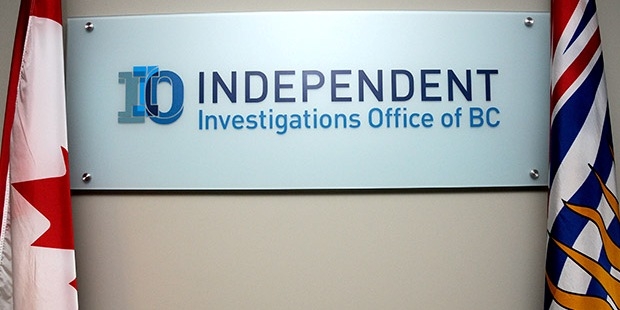IIO speaks to investigations in de Groot/Edey officer-involved shootings in West Kootenay
The Independent Investigations Office (IIO) is responding to many questions and allegations from local residents as to the amount of time the IIO is taking to investigate the officer-involved shooting deaths of Slocan resident Peter De Groot on Oct. 13, 2014 in the Slocan Valley and Yahk resident Waylon Edey on Jan. 28, 2015 in Castlegar.
Kellie Kilpatrick, IIO executive director, public accountability, started by answering these specific questions posed by The Castlegar Source (CS):
CS: Is there any legal compulsion, order or mechanism by which you can silence witnesses to an officer-involved shooting, prevent the press from reporting witness or family statements, or in any way impose a gag order on the secondary-, or tertiary-involved civilians?
Kilpatrick: “Witness officers are compelled to cooperate with us and provide statements. Civilian witnesses are not compelled. We tend to have a very good response from civilian witnesses once they understand our mandate. We cannot compel witnesses NOT to speak to media. Nor can we stop family from speaking. We frequently see media reports from those witnesses who have spoken to media – we actually sometimes identify witnesses through comments they have made to media. And finally, we will use the media to appeal to witnesses to come forward … So no gag orders; no intimidation; no court orders.”
CS: When an officer’s actions are under this kind of investigation, what is his/her active status (eg, desk duty, regular patrol, paid leave, etc.)?
Kilpatrick: “This is a decision that is made by the police agency. In our experience, when officers are involved in shootings, the police agencies typically assign the members administrative duties but, again, this is up to the police agency.”
CS: What is the rationale behind declining to publicize the name of an officer in an investigation like the Castlegar one, where the ‘whodunnit’ question is moot? Particularly in a smaller community such as Castlegar?
Kilpatrick: “It is our practice not to disclose that information much like police agencies do not disclose that information until an arrest is made or a charge is approved. There are hundreds of investigations underway where the subject of the investigation is not named. If and when Crown approves a charge in an IIO file, Crown will disclose the name. You may also have seen that the IIO does not disclose the names of those affected persons – again, we operate under the guidance of the Privacy Commissioner – we also take great care to protect the privacy of any affected person who is a youth. We also protect the affected persons right to a fair trial if there is a concurrent investigation underway – see the recently posted report from Nelson – we removed a significant amount of info out of our public report, as the affected person faces jeopardy in the courts. So it can be tricky for us to meet the needs of all those who have an interest in IIO cases.”
When asked about the perception that the IIO’s true mandate is to cover up, stall or otherwise obfuscate investigations to protect RCMP members, and how many of their investigations result in reports recommending charges to Crown Counsel (as opposed to public reports clearing the officers involved), Kilpatrick’s response was unequivocal, describing a more-than-30-per-cent charge recommendation rate to date.
” Since we opened in Sept 2012, we have concluded 90 files – 56 have been closed by a Public Report. Thirty-four resulted in Reports to Crown Counsel,” she said. “Our website does have all the public reports posted, as well as the RTCC and the dispositions. Our philosophy is that the public will (at the end of the day) understand what happened in these critical incidents either through the public report (where an officer did not commit an offence), the trial (where the IIO made a RTCC and Crown took the case to trial) or through the Clear Statement (the document Crown releases after the IIO sends the file to Crown and Crown declines to approve a charge).”
She said 31 cases remain under investigation, including six fatal officer-involved shootings since September 2014.
“As you likely know, the IIO is mandated to investigate critical incidents involving police officers. The mandate is narrow – we investigate death and serious harm (as defined by the Police Act). In the majority of our notifications, we conduct preliminary investigations in order to confirm that the incident was a death or an injury that met the definition of serious harm AND there was a relationship or nexus between the injury and an officer’s actions.”
She said that if both tests are met, the IIO sustains jurisdiction and a full investigation is conducted.
“Both IIO 14-000182 (Slocan) and IIO 15-000017 (Castlegar), we sustained, as both were officer-involved shootings resulting in death,” she said. “As an aside, those officers directly involved in the death or injury are designated as Subject Officers. They have the same rights as any citizen under the Charter including the right NOT to make a statement. Witness officers are compelled to cooperate with the IIO and are compelled to give a statement.”
Kilpatrick then spoke to the West-Kootenay-specific cases.
“For Slocan, the majority of the investigative tasks have been completed. We are waiting for the final autopsy report as well as forensic analysis including firearms and ballistics. Once we receive those reports, we will review all of the evidence to ensure there are no gaps. These reports may, in fact, require us to do additional work – that is why sometimes you will see 99-per-cent completed tasks on the website chart and then, a week later, it decreases to 75-per-cent completed.
“It is fluid.”
Furthermore, while she said it may seem significant time has lapsed without result since the Edey shooting in Castlegar, there has actually been a great deal of progress behind the scenes.
“For Castlegar, this case is new,” she said. “I appreciate a month is a long time for the family and the community – however, it one of our more recent cases. When incidents occur (like Castlegar), we front-end- load resources – we deployed the Team Director, Primary Investigator and other investigators – they were in the community for several days.”
She said they also have a file coordinator, forensic specialists assigned and a Manager for Services to Affected Persons, who provides a full range of support to those affected persons and their families – from direct trauma counselling to referral – she will also help families navigate through the various processes:
· The IIO investigation – did an officer commit an offence;
· The BC Coroners Service – who was the deceased, when, where and by what means did he die; how do we prevent these deaths in the future; possible Inquest;
· The RCMP Professional Standards – the internal review of conduct;
· Civilian Review and Complaints Commission – has oversight of RCMP re conduct, training, policy
“The IIO is one part of police oversight,” she said.
“Our investigations take time. We need to understand not only who was involved but why the incident occurred – and we focus on the actions of the police officer not the affected person. We try to stay on top of the data posted to the website – the chart is updated every two weeks – I can tell you that there has been significant activity on the Castlegar file – and the chart will be updated to reflect those advances.”
Online results tracking can be found at http://iiobc.ca/cases/


























Comments